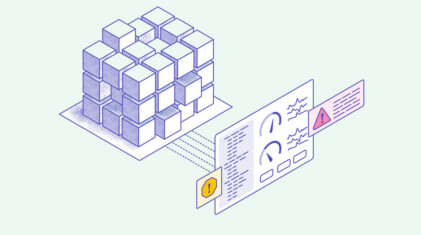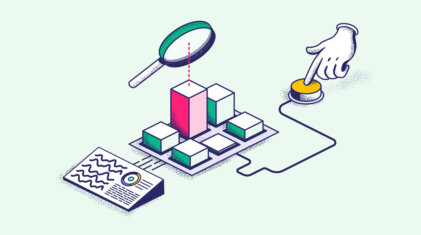Full-Stack Observability Guide
Like cloud-native and DevOps, full-stack observability is one of those software development terms that can sound like an empty buzzword. Look past the jargon, and you’ll…
Whether you are just starting your observability journey or already are an expert, our courses will help advance your knowledge and practical skills.
Expert insight, best practices and information on everything related to Observability issues, trends and solutions.
Explore our guides on a broad range of observability related topics.


Observability architecture and design is becoming more important than ever among all types of IT teams. That’s because core elements in observability architecture are pivotal in ensuring complex software systems’ smooth functioning, reliability and resilience. And observability design can help you achieve operational excellence and deliver exceptional user experiences.
In this article, we’ll delve into the vital role of observability design and architecture in IT environments. We’ll also showcase how a well-crafted observability strategy drives continuous success.
Observability architecture refers to the systematic design and structure of a framework that lets you gain insights into the behavior, performance, and health of complex IT systems and applications. It encompasses both technical and strategic considerations to ensure effective implementation of observability practices in the IT ecosystem.
At its core, observability architecture aims to create a holistic view for IT teams so they can better understand how different components interact, identify potential issues and make informed decisions to optimize system performance. Let’s dive into the technical aspects and design considerations that draw a robust observability framework:
A well-designed observability architecture combines these technical elements stated above to monitor, troubleshoot, optimize and enhance the performance and reliability of systems.
There are two common types of observability architecture, microservice-based systems and event-driven architecture.
Microservice architecture is a popular design pattern where an application is divided into a set of loosely coupled and independent services. Each microservice performs a specific business function and communicates with others through APIs.
Observability architecture in microservice-based systems typically involves:
Event-driven architecture (EDA) is an approach where components communicate by producing and consuming events. EDA allows for decoupled and asynchronous communication between different parts of the system. Observability architecture in event-driven systems typically involves:
In both microservice-based and event-driven architectures, observability architecture aims to provide comprehensive insights into the system’s behavior, performance and health. The tools and practices used for observability may vary based on the specific requirements and complexities of each architecture.
Modern software architecture presents several issues that organizations need to address to ensure the success of their projects. Such challenges include managing complexity, ensuring security, optimizing performance, integrating diverse technologies and adapting to rapid technological advancements.
Using an observability architecture and design is one way to overcome these challenges. Here’s some advantages of end-to-end observability architecture in an IT environment.
Provides a complete perspective of applications and infrastructure interactions.
Rapidly identifies anomalies, minimizing downtime.
Pinpoints root causes for effective issue resolution.
Optimizes performance for seamless interactions.
Identifies performance bottlenecks for proactive improvements.
Understands system behavior for optimal resource allocation.
Promotes teamwork between development and operations.
Pinpoints exact event sequences for accurate analysis.
Supports informed choices based on user behavior and trends.
Encourages iterative enhancements through real-time insights.
Ensures adherence to compliance standards.
Facilitates resource allocation based on utilization patterns.
Observability architecture is the backbone of modern IT systems, offering a strategic framework for holistic insights into system behavior, swift issue detection, and proactive optimization.
By integrating technical components with a focus on user-centric design, organizations can achieve operational excellence, enhance user experiences, and drive continuous improvement. Embracing observability architecture is paramount in navigating the complexities of IT environments, ensuring resilience, and delivering optimal performance in a dynamic digital landscape.
For more information about observability, read our full-stack observability guide.

Like cloud-native and DevOps, full-stack observability is one of those software development terms that can sound like an empty buzzword. Look past the jargon, and you’ll…

Event-driven architecture is an efficient and effective way to process random, high-volume events in software. Real-time data observability and monitoring of event-driven system architecture has become…

Breaking down larger, monolithic software, services, and applications into microservices have become a standard practice for developers. While this solves many issues, it also creates new…






